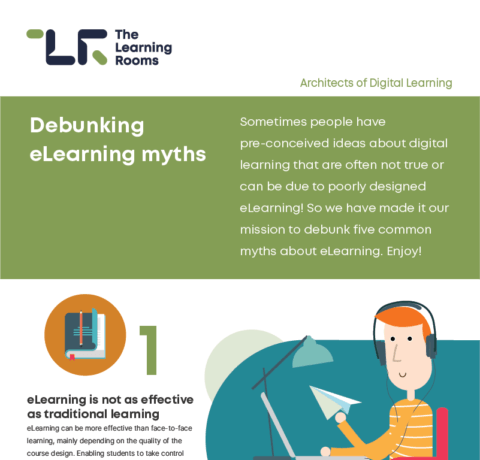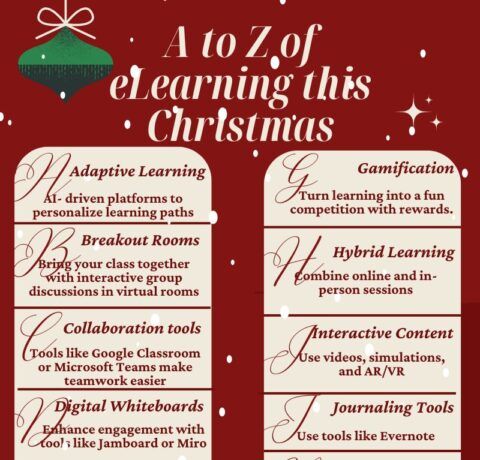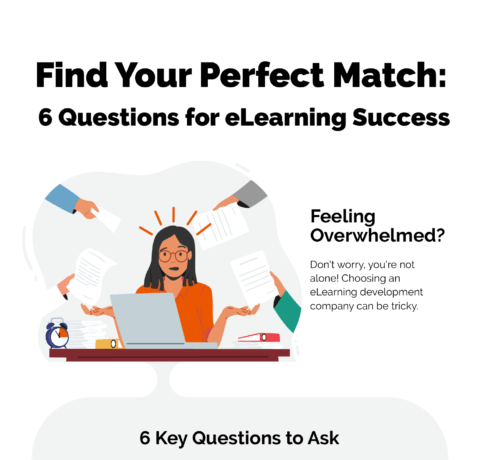10 eLearning Trends to Follow in 2015 Infographic
10 eLearning Trends to Follow in 2015 Infographic shows elearning professionals what to follow in the coming year.
1. Big Data
Numbers in eLearning are becoming so large that processing user generated data using traditional methods is becoming impossible.
How big data analysis can improve e-learning?
- By deeper understanding of the learning process.
Example: Statistics on completion time and rate. - By helping track learner and group patterns.
Example: How people click and go over the material. - Personalized courses.
Example: What are the differences in behavior for certain user cohorts. - Feedback analysis.
Example: Where learners spend more time and which parts they find harder. - Helping to compile a comprehensive ROI report for learning, by combining multiple sources of information.
2. Gamification
Gamification is the concept of applying game mechanics and game design techniques to engage and motivate people to achieve their goals. Gamification taps into the basic desires and needs of the user, focusing on impulses which revolve around the ideas of Status and Achievement.
Why is gamification important
- Learners recall just 10% of what they read and 20% of what they hear. If there are visuals accompanying an oral presentation, the number rises to 30% and if they observe someone carrying out an action while explaining it, 50%. But learners remember 90% if they do the job themselves, even if it is only a simulation.
- Almost 80% of learners say that they would be more productive it their university/ institution or work was more game-like;
- Almost 90% of users find online competitions fun but 60% of them point out that it’s only fun sometimes; something that shows that implementation matters.
3. Personalized Learning
Personalized Learning is the tailoring of pedagogy, curriculum and learning environments to meet the needs and aspirations of individual learners.
Aspects of Personalized Learning
- Adjusting the pace of instructions, so that they are more individualized.
- Adjusting the learning approach, so that instructions are differentiated.
- Allowing the users to choose their own learning path
- Adjusting the form of content presentation betwwen text and audio or video
- Leveraging student interests and experiences
4. Mobile Learning
As mobile use continues to grow, mobile will become the dominant medium for offering learning material.
Benefits of Mobile Learning
- Easy access - users can access the course anywhere and anytime they need it.
- Contextual learning - thanks to QR codes, GPS and other technologies, mobile learning lets you put learning into context, depending on the location of the learner. It's also a great base for using augmented reality;
- Digestible content - smaller screens force educators to deliver content in smaller chunks, which makes it easier for learners to remember what they learnt;
5. Focus on Return-on-Investment
Return on Investment (ROI) compares the investment in a training deliverable with the benefits over a specified period of time. Despite the traditional difficulties of calculating ROI, its importance will rise, as it provides a strong argument in favor of e-learning.
What to consider when calculating ROI:
Costs
- Personnel - instructional designers, administrators.
- Technology - IT infrastructure LMS etc.
- Content - courses, virtual materials
- Other, hidden promotional costs
Benefits
- Travel savings
- Trainer cost savings
- Savings on any training loistics - fascilities
6. APIs
Application Programming Interface (API) is basically the way applications communicate with each other. The widely accepted SCORM and Tin Can are two examples of APIs in eLearning. Systems like Zapier, offer non-programmable ways to integrate APls between services and achieve desired effects.
Possible uses of APIs in an elearning context:
- New user in your LMS > New user in CRM
- User finished eLearning course > Email triggered to instructor
- User gets a badge > Share on user’s LinkedIn or Badgepack
- New course is created > Newsletter sent to users
7. Automation
Content creation is a tedious and time consuming process. If we could somehow automate the process of content creation then we could potentially create a revolution in the quantity and quality of online courses.
Possible automation of course creation
- Quizzes, tests and exercises generated automatically from the course content.
- Algorithmically generated course content
- Customizing courses for each user by automatically matching content or difficulty to user skills
8. Augmented Learning
Augmented learning is an on-demand learning technique where the environment adapts to the learner. Augmented Reality market is expected to grow significantly - from 60 million users in 2013 to 200 million in 2018.
Possible uses of augmented learning
- QR code hunting
- Courses developed for Oculus Rift
- Location-based functionalities. Engaging learners into real life activities based on GPS tracking.
- Apple Watch and Google Glass apps extending the courses
9. Corporate MOOCS
Massive Open Online Courses are open courses for large numbers of users. MOOCs are often used by top universities. In the last few years MOOCs have also been getting more popular among companies and organizations.
Possible corporate use of MOOCs:
- Employee training - internal training of big groups of employees.
- Future employee training - open courses for teaching skills that are tailored to the company's needs
- Corporate Social Responsibility - sharing knowledge and skills and increasing brand recognition
10. Rise of cloud LMS
Despite speculations about the death of LMS, last years showed continued growth in the industry. Forecasts for 2015 predict it will continue to grow. Out of all learning systems, cloud-based platforms had the highest growth in the last two years.
Statistics
- Forecasts show that Learning Management Systems Cloud will grow at a rate of 25% for the next five years, reaching $7,83 billion in 2018.
- Cloud based authoring tools and learning platforms experienced over 50%+ growth in North America last year.
- Predicted growth of one of the top cloud-based LMS, Talent LMS, for 2015 is over 200%. TalentLMS is a cloud based Learning Management System (LMS) that offers an extremely easy way to create your courses and engage your trainees in learning.







You can adjust your cookie preferences here.